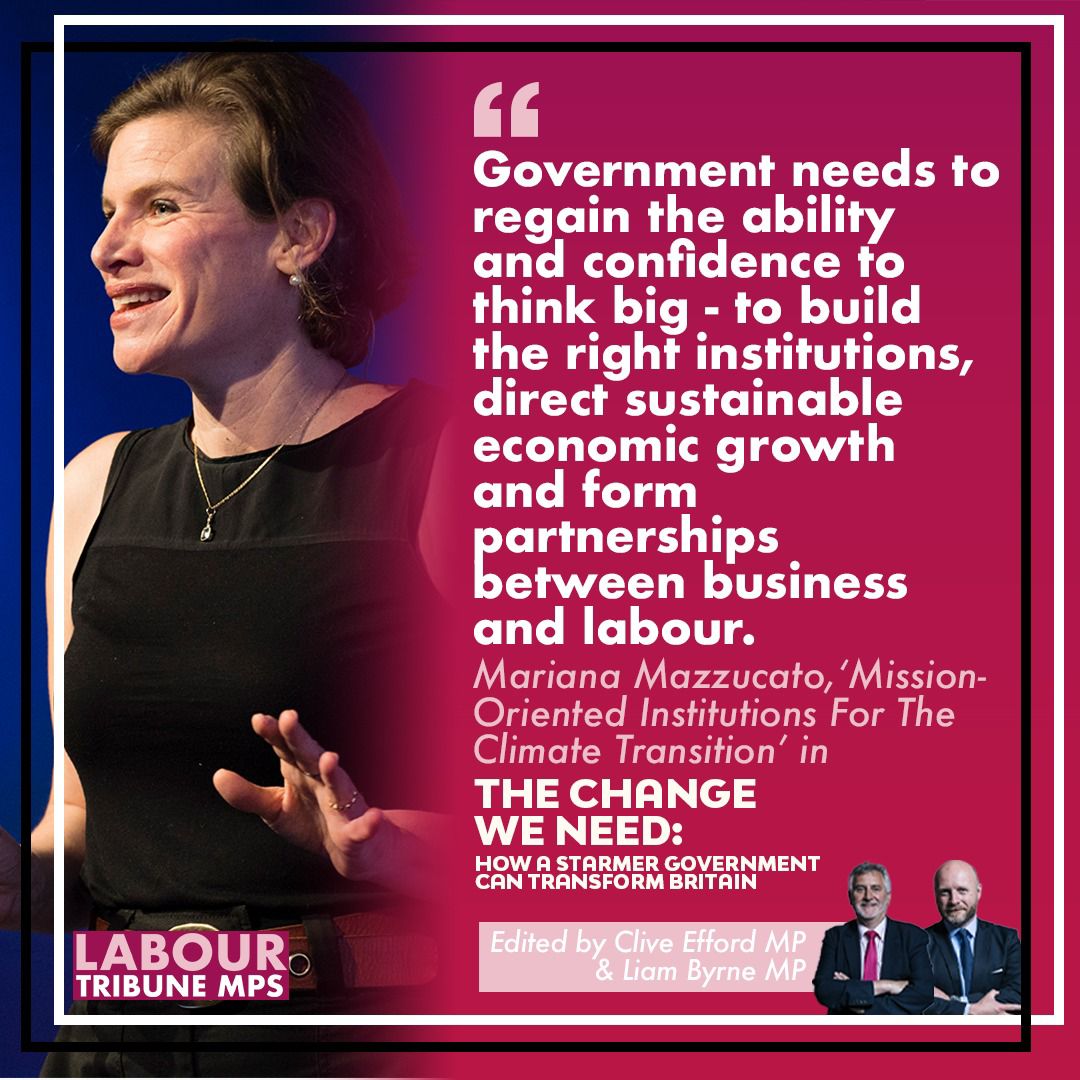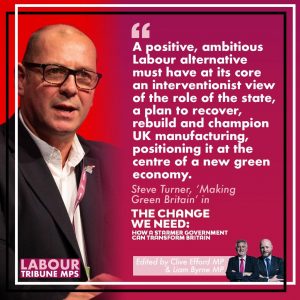As droughts affected all of England’s South West region this Summer, the nation’s privatised water companies continued to leak millions of litres of water daily. And even though the English water industry has been called out for failing to adequately invest in the necessary infrastructure to meet ecological standards, executive pay and dividend pay-out seem to reward such harmful performance. The failure to secure a sustainable water supply for the benefit of a few is emblematic of the UK’s inability to deal with the wider impacts of the climate crisis. It is only one example of Britain’s chronic underinvestment in its capabilities required to solve the most pressing issues of our time.
The case of English water companies shows that markets will not find an ecological and socially equitable direction on their own. Governments play a fundamental role in providing a stable and consistent conduit for investment which ensures that regulation and innovation converge along a green trajectory. Government intervention is only effective if the state has the corresponding capability to act. We need to transform government from within, while giving the economy a new direction.
Transforming the institutional foundation will require innovation and experimentation at all levels of governance, where the focus should be on forming symbiotic partnerships with the private sector, expanding citizen participation, and designing institutions that pro-actively shape markets. Without dynamic capabilities that are built to genuinely serve the public interest, governments cannot even devise robust terms of reference for the companies they bring in, which can then easily capture the agenda—of which the water industry is a case in point. Governments can and should be shaping markets to ensure that collectively created value serves collective ends.
Top-down pledges and policies are not enough. Rather, we need a structural and institutional transformation from the ground up. Our only hope of keeping global warming within “safe” limits (in fact, the agreed target is much safer for some than for others) is to accelerate a green transition with massive, coordinated public investment aimed at innovation leaps and a socio-economic paradigm shift. The combined efforts of the public and private sectors are needed to transform paradigms and bring better and broader growth. Yet public-private partnerships in innovation and market creation have often been too unbalanced and the benefits of successful projects have not been fairly distributed within the population.
Just as climate change is a dynamic, non-linear phenomenon proceeding through a series of tipping points – each with its own knock-on effects, making it extremely difficult to predict the pace and scale of change – the process of curtailing or even reversing it relies on tipping points cascading in the other direction. Synergistic leaps in technological innovation and institutional transformation can promote positive feedback loops and cumulative multiplier effects.
That is precisely the aim of what I have called mission-oriented innovation policy. We need to marshal resources and align economic policies around measurable objectives, such as the emergence of new technological innovations and the shaping of new markets. This means bringing the direction of growth and innovation—rather than only its rate—to the core of the conversation. Only by picking a direction of growth, can government steer the economy and tackle the grand challenges of our time. To justify both the missions and the policies, directions must be part of a social consensus. Each mission must be inspirational and catalytic and require many actors and sectors to innovate and collaborate in new ways – whether for a plastic-free ocean or well-managed water security.
To successfully implement a mission-oriented industrial strategy, government must think more expansively about its policy tools. Well-designed procurement contracts can be used to stimulate bottom-up innovation in the direction of missions. To maximise their impact, departmental budgets should be aligned around mission challenges and share the same public procurement guidelines. Missions must crowd in investments by many actors, with strong conditionalities attached to any form of public support, so as to drive the “upward-scaling tipping cascades” that will expand the current technological horizon and usher in a zero-carbon future. In France for example, Covid-19 related government bailouts were conditional on five-year targets to lower domestic carbon dioxide emissions.
But to reorient the economy around mission-oriented innovation leaps, we will need new institutions at all levels, from local to global.
At the international level, for example, a “CERN for climate technology” (modelled on the European supranational scientific research body) can coordinate investments from participating governments, using a collective pot to finance the development of innovative technologies that the private sector will not pursue on its own, either because they are too risky or because the financial returns are too low. This idea was featured in the final report of the G7 Panel on Economic Resilience, on which I represented Italy.
At the national level, public green investment banks can provide the patient capital needed to expand zero-carbon markets. A promising model is the Scottish National Investment Bank (which I had the honour of helping set up), a public financial institution whose primary mission is to help decarbonize Scotland’s economy. The new bank will catalyse investment across sectors and firms that are specializing in zero-carbon technologies. Another example is the newly founded Advanced Research and Invention Agency (ARIA) through which the UK government sets out to conduct and commission ambitious research with a tolerance to failure. Because government has the capabilities to make long-term risky and capital-intensive investments in radical innovation, it has the potential to transform the economy.
Last but certainly not least is the municipal level, which is where climate action materializes in tangible projects such as zero-carbon housing, car-free neighbourhoods, and circular supply chains. Here, the new Council of Urban Initiatives, co-hosted by University College London, the London School of Economics, and UN Habitat, has a critical role to play in sharing information about successful projects and aligning them with international agreements, not least those that came out of COP26.
These institutions will need buy-in and engagement from citizens – and especially from vulnerable workers – to get off the ground. The train strikes and other backlash protest movements have demonstrated why momentum behind sustainable economic growth must come from below. Well-funded public transport and a strong rail network are essential for moving people away from private car use and consequently fundamental for the UK’s ability to reduce greenhouse gas emissions. The thinking behind Green New Deal proposals is to harness popular energies by putting people at the heart of the economic transition.
Popular participation means engaging citizens in community-level processes, such as the Camden Renewal Commission, which has used key debates among resident associations to place housing estates at the centre of the London borough’s clean-growth strategy. It also means inviting community associations, cooperatives, and trade unions to form “public-common partnerships” with governments. Another option is to establish citizens’ assemblies on climate change, as Spain has done. Such institutional innovations will serve as the foundation for a new social contract, which is the only way to build public trust and achieve a socially just transition.
The biggest mistake of climate activism has been the failure to make a compelling, realistic case for a green transition that promotes the interests of labour. A Green New Deal that creates good new jobs, raises living standards, and reduces precarity and inequality should be the highest priority. The green transition’s success will hinge on measures ensuring that workers whose jobs are threatened by decarbonisation can gain skills and employment in the new economy.
That will not happen unless workers have a place at the negotiating table. Together with the housing, energy, and cost-of-living crisis, the climate transition is one of the grand challenges of our time. We will need to redouble the behind-the-scenes work of institution-building, with special emphasis on widening participation to include ordinary citizens. Government needs to regain the ability and confidence to ‘think big’—to build the right institutions, direct sustainable economic growth, and form symbiotic partnerships between business and labour. Averting a climate disaster will require widespread experimentation with new technologies – and, no less importantly, new institutions at all levels.
This piece was adapted from the Project Syndicate article on ‘The Right Institutions for the Climate Transition’. (Available here: https://www.project-syndicate.org/commentary/climate-institution-building-after-cop26-by-mariana-mazzucato-2021-11?barrier=accesspaylog).





